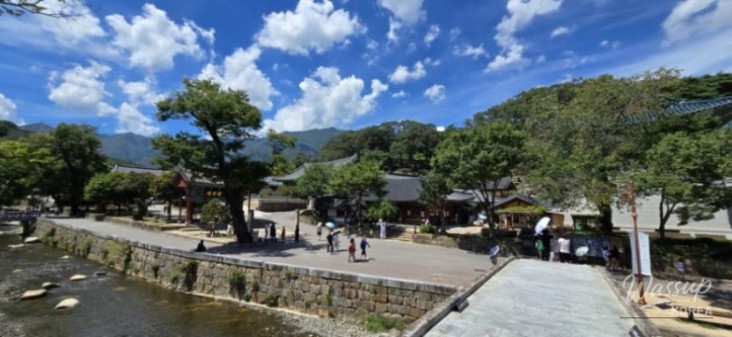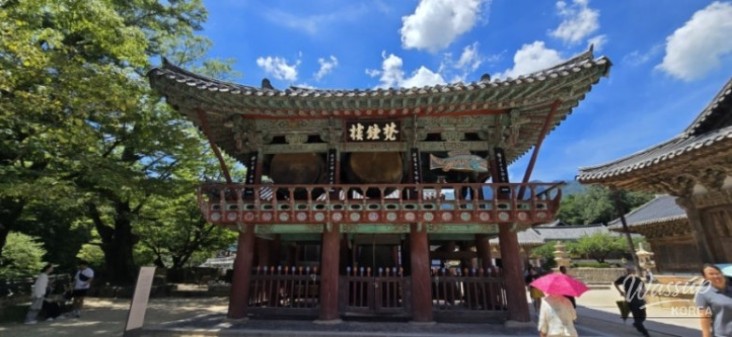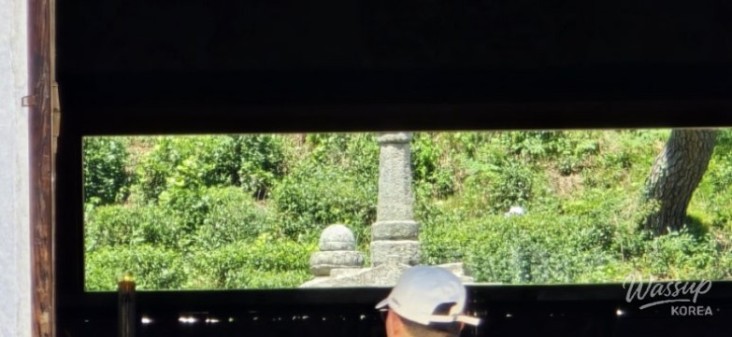Tongdosa Temple: A Jewel of Korean Buddhism


Yeongchuk Chongnim Tongdosa Temple
Nestled on the southern slopes of Mt. Yeongchuk, a peak soaring to 1,081m, Tongdosa Temple overlooks both the Nakdong River and the East Sea.
Founded in 646, during the 15th year of Queen Seondeok's reign, this ancient temple was established by the monk Jajang Yulsa. He enshrined the Buddha's relics, kasa (robe), and scriptures, which he had brought from Tang China after building the Geumgang Ordination Platform, and named the temple Tongdosa.
This signifies that all aspiring monks must receive their precepts at the Geumgang Ordination Platform, where the Buddha's genuine relics are enshrined. It also embodies the profound meaning of integrating all truths to deliver sentient beings from suffering.
Tongdosa is one of the Three Jewel Temples of Korea, specifically the Buddha Jewel Temple, because the relics and robe of Sakyamuni Buddha are enshrined on the Geumgang Ordination Platform. Consequently, no separate Buddha statue is enshrined in the main hall, the Daeungjeon.

As the head temple of the Jogye Order, Tongdosa maintains the training systems of Gangwon (lecture hall), Yulwon (vinaya school), and Seonwon (meditation hall), making it Korea's foremost comprehensive training center for Buddhist practitioners. It steadfastly carries on the tradition of Korean Buddhism through various outreach and cultural activities, including the Gaesandaejae (founding anniversary ceremony), Hwaeom Sanrim Dharma Assembly, and Templestay programs.
Tongdosa was inscribed on the UNESCO World Heritage List on June 30, 2018, under the title "Sansa, Buddhist Mountain Monasteries in Korea," rightfully proclaiming itself as a representative temple of Korean Buddhism for generations to come.
Iljumun Gate (One-Pillar Gate)
Cheonwangmun Gate (Gate of the Four Heavenly Kings)
Southern Virudhaka, Western Virupaksa
Southern Virudhaka: A deity who governs Virudhaka Heaven and promotes the roots of goodness in oneself and others.
Western Virupaksa: A deity residing on the western side of Mount Sumeru, guarding the western world with dragons and Pisasa spirits.
Northern Vaisravana, Eastern Dhrtarastra
Northern Vaisravana: A deity who governs Vaisravana Heaven, protects the northern direction, and commands Yakshas and Rakshasas.
Eastern Dhrtarastra: A deity who governs Dhrtarastra Heaven and protects the eastern world.
Garamgak Shrine
Beomjongru Pavilion (Bell Tower)
Wooden Water Trough
Yeongsanjeon Hall
Geungnakbojeon Hall (Paradise Hall)
Three-Story Stone Pagoda of Tongdosa Temple in Yangsan

Water Lily
Yaksajeon Hall (Medicine Buddha Hall)
Bulimun Gate (Gate of Non-Duality)
Daeungjeon Hall, Gwaneumjeon Hall (Avalokitesvara Hall)
Daeungjeon Hall
Gwaneumjeon Hall
Sejonbigak Stele Pavilion, Gwaneumjeon Hall
Geumgang Ordination Platform, south of Daeungjeon Hall
The Geumgang Ordination Platform, the symbol of Tongdosa, is encountered after passing through the three gates: Iljumun, Cheonwangmun, and Bulimun.

The wooden Daeungjeon Hall was rebuilt in 1645 (the 3rd year of King Injo's reign) by Monk Uun after being destroyed by fire during the Japanese invasions. It features different plaques on each side: Geumgang Gyedan (Diamond Ordination Platform) on the south (front), Daeungjeon on the east, Daebanggwangjeon on the west, and Jeogeolbogung on the north.
Directly behind the Daeungjeon Hall is the stupa containing Buddha's relics, the focal point of Tongdosa.
It is said that the relics of the Buddha brought by Jajang Yulsa from Tang dynasty were enshrined here.
This is why Tongdosa Temple gained the title of Bulgosa Temple.
Because the relics of the Buddha are enshrined, no Buddha statue is enshrined inside the Daeungjeon Hall. Instead, an elaborate and magnificent altar is created to adorn the Buddha's seat.
Myeongbujeon Hall (Hall of the Underworld)
Sejonbigak Stele Pavilion
Daeungjeon Hall
Gwaneumjeon Hall
Samseonggak Shrine, Guryongji Pond
Geumgang Ordination Platform Stupa
View of Iljumun Gate from Cheonwangmun Gate















































No comments yet.






